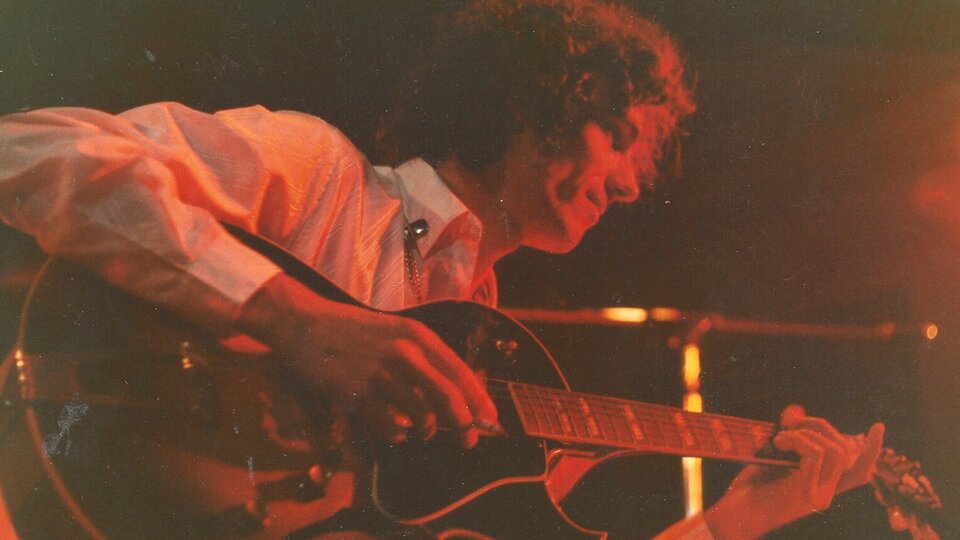The website Gap has just enabled its virtual space to the exhibition “Forbidden to enter with cameras”. It is an online exhibition of unpublished photos taken of Argentine musicians -with an epicenter in rock- by two “amateur” photographers during the ’80s and’ 90s. The material – belonging to Gabriel Patrono and Juan Faraone– It consists of 144 images recorded in various concerts, between 1985 and 1992. “With Juan, a friend from the neighborhood, we went out to ‘steal’ images from the music scene of the ’80s and here they are,” introduces Patrono, whitewashing the situation : the photos were taken “from the left”, without permits or accreditations, entering various places with the cameras hidden among the clothes and the zooms sneaking around in backpacks. “We don’t even know who each photo belongs to, because we passed the camera from hand to hand all the time,” laughs the reporter.
If it had not been for such audacity, perhaps it would not be acceding today to unknown records of Charly García about to crash his guitar against the floor in a Works ’88; of “Negra” Sosa playing the box with an immense smile like her song in Pueyrredón de Flores (year ’91); of the “Polaco” Goyeneche taken by the hand of Jorge Donn, in that unforgettable Rex of ’92; by Luis Alberto Spinetta, offering a popular and contemporary music clinic at the Recoleta Cultural Center (1986); by León Gieco and Leda Valladares presenting the nodal Scream in the sky in the Auditorium of Banco Nación (1985); by Miguel Abuelo in full performance -with a Joy Division T-shirt- at Obras del ’87; or Litto Nebbia at the piano at the San Martín Theater.
“I was fortunate to enter adolescence with the beginning of democracy and in full fervor of creative, inspired and stimulating bands,” continues Patrono. “With the information I had because of my curiosity, I went to all the shows that I could with or without tickets, and I stayed near Works or in the spaces for recitals eager to enter, even if it was for the final songs, when they opened the doors for the retiring people. With Juan we ran with the camera in our backpack in order to get some in the encores, or simply to be two more witnesses of a single moment ”.
The imaging work is divided into four rolls, each with two sections of 18 photos each, and was carried out using the rescue of original negatives digitized by Giuliana Trucco, and produced by Divagario, self-managed producer of documentary filmmakers, writers, musicians, animators and editors, whose purpose is to generate original music productions for performing arts, records and various digital editions. “It was an experience that marked my life … everything I did later in cultural management, film and music is marked by that beginning,” says Patrono, at the time creator of the cultural collective La Nave de los Sueños. “I was 13 years old when I started going to all the recitals that I could and with Juan it occurred to us to leave a document of the music scene of that moment. So we borrowed a camera and, since they came out wrong, dark and out of focus, we enrolled in a photography school in Ramos Mejía”Laughs the photographer, who used that material to give to friends, exchange with fans who were in it, or even take him to the portrayed musicians.
“It never occurred to me to accredit myself or take the photos to any press. Neither did he know people from the middle nor did he know the structure of a show. Rather, it was about the fascination of leaving a record and having an adventure. He was happy to take those photos and share them with the people close to him. Let’s say that I was aware of the importance of the moment and I was always very consumer of everything related to rock culture ”, evokes Patrono, who He recovered several of the negatives thirty years later in San Justo, in his parents’ house. “My friend Giuliana Trucco digitized everything I found in my parents’ house and we put together the launch of Divagario in digital format, so that we don’t lose the desire to give people some joy in such a hard year.”
Most of the photos featured in the digital display were shot by a 110mm camera, with small negatives being used multiple times, and violated the clarity of the images. Such conditions, however, did not prevent people from seeing portraits of a time that marked the lives of millions of young people, and even improved when Faraone’s father brought a fixed viewfinder camera to the young enthusiasts, from Italy. “We entered photography passionate about leaving a document, a point of view on the musical and social scene that we inhabited. And I think this show sums up the intention well, ”closes Patrono.
– .


